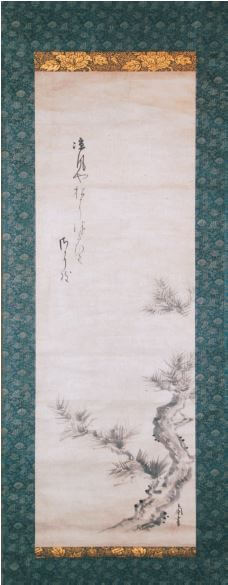Story of Buddhism in Japan
When it comes to the art forms in Japanese culture, there are many different ways of doing so. There are two forms of art in the culture itself, haiku and Sumi-e, which are based on the poetry and movement between them. As mentioned in chapter 19: Zen Buddhism, where mentions, "How different this kind of poetry is from what became the traditional style
in the West. The haiku is to traditional Western poetry what Sumi-e is to traditional Western painting. Both, however, have profoundly influenced Western styles in modern times. Haiku is much like Sumi-e." (Bresnan 522). That being said, both sources in Japanese would have the same sources which lead to the same meaning to one another, based on how they thought about the idea. Sumi-e and haikus are based on the art forms in Japanese culture in general.
Overall, both Sumi-e and haikus are similar in some way, since they both come from different art forms,
but similar theming based on what's going on that has to do with the aesthetics of calmness and/or peace. At least it mentions, "The spirit of Zen affects many of the arts of Japanese culture, and they all come together in the 'Tea Ceremony.' It is a sort of grand opera of all the elements influenced by Zen... Like the kare-Sansui gardens, Chado is uniquely Japanese. Both of these art forms, so deep and filled with beauty, are difficult for the Western mind to understand. Both, however, have been honed to perfection over many centuries." (Bresnan 523). Since this passage would sum up the answer if these forms of art are similar to one another, and agree since they would have something to do with how they've performed in Japanese culture. That being said, both would also have to do with the Zen since based o the mentions of beauty and calming ideas in the culture that would soon transfer to the Western side of the spectrum.
 |
| Japanese Ink Painting Shozo Sato, 2010 |
How they are similar is how they both are based on the art forms in Japan, which gives out the calm movement and poetry in that way. Since it mentioned, "The special thing about calligraphy, though, is that it is writing; it's not only beautiful to look at, but it also communicates the written thoughts of its creator. The art of calligraphy is this ideally suited to unite with the art of poetry. And in the art of poetry, Zen Buddhism found yet another magnificent vehicle for the expression of its essential spirit." (Bresnan 521). It makes sense since calligraphy was mentioned as a form of art since it flows through the paper, similar to a painting on a canvas, overall leading to the idea of "zen" as a well in spirit. Which leads to another question of how they're "so Zen" since it has to do with the writing and how it's being brought up for the artist to perform in some way, and then have the audience view what these works have to do with the Zen idea, as they put them in a calm, esse in the point of view of the person view the work or listening to a haiku poem.
 |
| fuyu niwa ya garden in winter— tsuki mo ito naru the moon also becomes a thread mushi no gini n the insect’s song |
but similar theming based on what's going on that has to do with the aesthetics of calmness and/or peace. At least it mentions, "The spirit of Zen affects many of the arts of Japanese culture, and they all come together in the 'Tea Ceremony.' It is a sort of grand opera of all the elements influenced by Zen... Like the kare-Sansui gardens, Chado is uniquely Japanese. Both of these art forms, so deep and filled with beauty, are difficult for the Western mind to understand. Both, however, have been honed to perfection over many centuries." (Bresnan 523). Since this passage would sum up the answer if these forms of art are similar to one another, and agree since they would have something to do with how they've performed in Japanese culture. That being said, both would also have to do with the Zen since based o the mentions of beauty and calming ideas in the culture that would soon transfer to the Western side of the spectrum.

Comments
Post a Comment